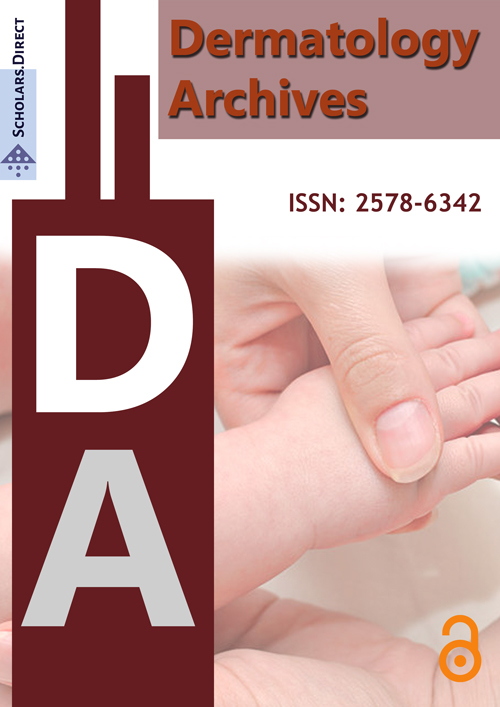Skin Immunodysregulation Disorders - The T-Cell Mediated Dermatoses
Introduction
The skin as an immunological organ
The skin harbors an immune organ, made up of keratinocytes, dendritic cells (also known as Langerhans cells), as well as immune-derived nomadic cells (e.g. lymphocytes, neutrophils and eosinophils), which can respond to a variety of insults including inflammation, wound repair and infection. In addition to playing a role in defense, the skin’s immune system also modulates the growth of commensal microbiota. Keratinocytes monitor colonizing bacteria, fungi and viruses using Pattern Recognition Receptors (PRRs) including Toll-Like Receptors (TLRs), mannose receptors and NOD-like receptors. These receptors recognize a variety of Pathogen-Associated Molecular Patterns (PAMPs), including flagellin, nucleic acids, lipopolysaccaride (from gram-negative bacteria), peptidoglycan and lipoteichoic acid (from gram-positive bacteria), as well as mannan and zymosin (from fungal cell walls), causing the activation the skin’s innate immune response [1-4].
The innate immune system
Upon stimulation from outside threats, a response occurs known as the innate immune system. “Innate” refers to the skin’s inherent ability to ward off invading microorganisms, as well as environmental threats such as allergens [1,3,5]. In the innate immune response keratinocytes and surrounding fibroblasts secrete Anti-Microbial Peptides (AMPs), as well as inflammatory cytokines and chemokines, to create a chemical milieu allowing for the direct interplay between keratinocytes, immune cells and microorganisms. AMPs bind to the cell surfaces of microorganisms, allowing immune cells to directly target and destroy bacteria, fungi and enveloped viruses [1,3-5].
It is important to note that the skin’s immune system can discriminate between harmless commensal versus harmful pathogenic microorgansisms, a response reliant on TLRs. Desensitization of TLRs (ergo tolerance) occurs either through decreased receptor expression or increased inhibitory regulators [such as IL-1-receptor-associated kinase 3 (IRAK3/IRAK-M) or Suppressor of Cytokine Signaling 1 (SOCS1)] in response to prolonged exposure to commensal microorganisms. The activation of TLR signaling by commensal bacteria has also been shown to be necessary for cell survival and repair during infection. On the other hand, specific recognition by Pathogen-Associated Molecular Patterns (PAMPs) allows for immune system to target pathogenic species of bacteria, fungi and viruses [1-4,6,7].
Commensal skin flora also plays a role in skin defense. Staphylococcus epidermidis has recently been demonstrated to modulate the host innate immune system. For instance, S. epidermidis secretes modulins that inhibit pathogenic strains of bacteria including S. aureus and group A Streptococcus, lipoteichoic acid to inhibit skin inflammation through TLR-2/-3-mediated pathways, and increases keratinocyte expression of AMPs through a TLR2 dependent mechanism to enhance pathogenic microorganism destruction [8].
The Role of the Microbiome in Immunodermatoses
A microbiome is defined as a mini-ecosystem or collection of symbiotic, commensal and pathogenic microbes and microorganisms (bacteria, fungi and viruses) inhabiting an environment, in the skin’s case the stratum corneum [8]. The skin microbiome is influenced by a multitude of endogenous (genetic polymorphisms, AMPs, native immunity), as well as exogenous (hygiene hypothesis, hand washing, physical and chemical irritants) factors. Recent mouse models suggest that local skin flora balance is closely associated to effector and regulator T cell populations [8].
Disease states also affect the composition of the skin microbiome. For instance, patients with Atopic Dermatitis (AD) have increased susceptibility to S. aureus infection at sites of excoriation and bacterial inoculation. Upregulation in the expression of interleukins 4 and 13 (IL-4, IL-13) results in decreased epidermal barrier and thus susceptibility to microbial invasion. In addition, AD patients have excessive fungal colonization by Malassezia globosa and restricta leading to a distorted and non-diverse bacterial microbiome, with decreased colonization by organisms such as Clostridium. This lack of diversity allows for increased colonization by S. epidermidis, and infection by S. aureus [8,9].
Although less is known regarding the psoriasis microbiome, some researchers claim psoriasis patients have decreased Staphylococcus and propionibacteria species compared to healthy skin samples. During psoriasis exacerbations, AMPs such as cathelicidin and human β-defensin 2 are upregulated, suggesting an underlying disturbance in the skin microbiome. New studies have linked antibiotic use with increased incidence of psoriatic arthritis; although it is hypothesized that this mechanism might be related to alterations in the microbiome, no clear mechanism has been elucidated [8].
In addition to the localized skin microbiome, researchers have hypothesized that global microbiota may also play a role in the development of inflammatory skin diseases. The administration of Lactobacillus reuteri decreased the incidence of IgE-mediated AD, suggesting long-term alterations in the intestinal microbiome may decrease inflammatory efforts mediated by T helper-2 (Th2) cells [10]. Applying kefir, a fermented dairy product, to burn wounds has been shown to increase collagen formation and epithelialization through its anti-bacterial and anti-inflammatory properties [11]. Furthermore, the ingestion of probiotics (which include S. epidermidis) may help with neutrophil recruitment, disrupting biofilms, and increasing the release of anti-microbial peptides by keratinocytes and fibroblasts [12].
Dysregulation of the Skin Immune Response and Skin Disorders
In inflammatory dermatitis and dermatoses states, the innate immune system may become dysregulated, for example, increased activity is seen in psoriasis and decreased activity is seen in AD [3,9,13] (Table 1). These changes lead to alterations in the cutaneous microbiome, and in some cases this may be a factor in disease activity. It is also possible that changes in the cutaneous microbiome, independent of the innate immune system, could also be a driving factor is some pathologic states.
Psoriasis
Psoriasis affects approximately 2.5% of the global population. The most common form of psoriasis, “plaque” psoriasis, accounting for 90% of clinical psoriasis presentations, presents as sharply demarcated erythematous plaques with an overlying adherent silver scale [13,14]. These plaques are often located on extensor surfaces, such as the elbows and knees. In addition to the above “plaque” psoriasis, other subtypes exist including: “inverse” in which the axilla, groin, and gluteal cleft/folds are involved; “pustular” presenting with monomorphic pustules of the palms/soles which can then generalize throughout the body; “guttate” characterized by drop-shaped plaques after Streptococcus infection or a rapid systemic steroid taper; “sebo-” affecting the scalp, inner ear, face and skin folds; “oral” characterized by the fissured tongue; and “nail” with evidence of multiple pits or oil spots. Psoriatic Arthritis (PsA) affects about 30% of psoriasis patients and involves symmetric small joints, the sacroiliac joints and the spine [13,14].
Psoriatic lesions produce a large amount of AMPs and are characterized by a highly active innate immune response with a resulting shift in the resident T lymphocyte population favoring initially a Th1 subtype, and later, Th17. Antigens that have been linked to T cell activation in psoriatic patients include elements of the stratum corneum, squamous cell carcinoma antigen, nuclear ribonucleoprotein A, Heat Shock Protein (HSP), type I keratin (molecular mimicry due to similarity in structure to the Streptococcus M protein), keratin 17, human papilloma virus-5 (HPV-5) Deoxyribonucleic Acid (DNA), antimicrobial peptide cathelicidin (LL37; produced by keratinocytes), and ADAMTS-like protein 5 (produced by melanocytes). Increased amounts of TNF-α, IL-23 and IL-17 cause T cell activation, with overexpression of PAMs and TLR pathways, resulting in chronic inflammatory changes of the skin [13,14].
The early activation of T-helper 1 (Th1) cells by endocytosis of a TLR-9-antigen complex, induces the expression interferon-γ (IFN-γ) causing dendritic cells to produce Chemokine Ligand 20 (CCL20) and IL-23 leading to the expansion of the Th17 cell population. Increases in IL-17 production by Th17 cells leads to a chronic inflammatory cascade, including Th21/IL-21 mitogenic effects on keratinocytes and Th22/IL-22 keratinocyte activation and epidermal acanthosis. Once the chronic inflammatory pathway has been set into motion, Th22 and Th17 lymphocytes play a role in disease memory and allow for recurrence of psoriasis at previously affected sites (Figure 1) [13,14].
Understanding the inflammatory pathways of psoriasis has provided a multitude of therapeutic options. Although initial treatment focused on anti-inflammatory drugs (topical/systemic steroids, topical calcineurin inhibitors and immunomodulators such as methotrexate and cyclosporine), new biologic therapeutics have been developed to inhibit the activation and sustainment of the major chronic inflammatory pathways found in psoriasis (Figure 2). Biologic agents have proven successful for the treatment of patients with psoriasis, as well as psoriatic arthritis. The earliest used biologics were the Anti-Tumor Necrosis Factor (TNF) small molecules and antibodies - etanercept, infliximab and adalimumab. With continued research and understanding of the underlying biochemical pathways, the IL12/23 antibody ustekinumab, the IL17 antibody secukinumab and the Phosphodiesterase (PDE)-4 inhibitor apremilast were developed. As these drugs targeted more specific pathways compared to the anti-TNF medications, their immunosuppressive effects and side effect profiles were considered “mild” in comparison. Currently apremilast is the only available oral medication for the treatment of psoriasis. The newest generation of IL17 monoclonal antibodies include ixekizumab and brodalumab, which have also now been FDA-approved for the treatment of moderate to severe plaque psoriasis [15,16].
Atopic dermatitis
AD is a chronic, relapsing inflammatory dermatitis that affects approximately 2% of American adults and 15% of children [17,18]. AD presents as erythematous pruritic patches and plaques, most commonly found on the flexural surfaces, such as the axillae, antecubital fossae, and popliteal fossae. In addition to dysregulation of the innate immune system, AD is often also associated with changes in the skin microbiome affecting colonization and rates of infection [8,17,18].
Unlike psoriasis, AD lesions are associated with low levels of AMP. The loss of AMP expression may be a contributing factor to the decrease in cutaneous microbiota diversity [8,9]. It is estimated that 90% of AD patients are colonized with S. aureus on both lesional and non-lesional skin, versus less than 5% of healthy individuals. In comparison, normal, healthy skin flora is composed primarily of Actinobacteria, Firmicutes, Bacteroides and Proteobacteria species. This loss of microbial diversity is often amplified during acute AD flares; recent mouse models have shown that diversity can be restored using anti-inflammatory, antibiotic and Narrow-Band Ultraviolet B (NB-UVB) treatments [8,9,19]. In addition to changes in skin flora, researchers have also noted that the gut microbiome of AD patients differs in that there is an enrichment of Faecalibacterium prausnitzii. The results from this study showed that AD severity was inversely correlated to the diversity of the intestinal microbiota implying that the composition of the global microbiota may have a role in promoting long-term chronic inflammatory states [9].
Initially, early AD results in the upregulation of the TLR-2 pathway with increased expression of IL-25, IL-33 and Thymic Stromal Lymphopoietin (TSLP), causing activation of dendritic cells and eventually potentiation of the Th2 phenotype [9]. During this acute phase of AD, Th2 cells release IL-4, IL-5, IL-13 and IL-25. The surge of Th2-related cytokines in AD lesional skin is thought to contribute to the down regulation of the innate immune system. With increased expression of IL-6 and decreased expression of IL-10, the skin of AD patients is more susceptible to infection and has a decreased anti-inflammatory response to pathogens (Figure 3). As AD becomes chronic, the lymphocyte cell population shifts from initial Th2 surge towards Th1 predominance [9].
In addition to Th cell dysregulation, AD has been associated with the Filaggrin (FLG) loss of function mutation causing disruption in the physical skin barrier that subsequently increases transepidermal water loss, allergen penetration with increasing levels of Immunoglobulin E (IgE), and colonization of the skin by S. aureus [9,19]. Other immune cell types such as eosinophils and basophils may contribute to host defense in the setting of decreased physical barrier and innate immunity. For instance, AD patients have been found to have tissue eosinophilia. These eosinophils deposit extracellular protein granules that may play a role in host defense. Basophils are recruited by IgE-activated mast cells and create anti-bacterial extracellular traps [9].
Traditional AD treatment options have focused on lipid repletion and heavy emollient use to help with loss of the physical barrier (emollients), shock treatment to acutely alter the pH of the skin (bleach baths and vinegar soaks), and anti-inflammatory agents (topical/systemic steroids, topical calcineurin inhibitors, and immunomodulators such as methotrexate, cyclosporine or mycophenolate mofetil) [20-22]. Early use of emollient has been shown to decrease risk of developing atopic dermatitis in children considered high risk given prior family history [23].
With an increase in the understanding of the pathogenic mechanisms of AD, new treatment options have recently become available. A topical Phosphodiesterase-4 (PDE4) inhibitor, crisaborole, has been approved for use in mild to moderate AD [24]. By decreasing the amount of cyclic Adenosine Monophosphate (cAMP), inflammatory cytokines such as IL-1 and IL-6 may be over expressed, and inhibitory cytokines such as IL-10 may be down-regulated [25]. Furthermore, dupilumab, a monoclonal antibody against the Th2 IL-4-receptor (IL-4Rα), is the first biologic approved for the treatment of moderate to severe AD. Phase 3 trials of this drug have shown that a significant number of patients report a 75% improvement in the Eczema Area and Severity Index when compared to placebo [26] (Figure 4).
Allergic contact dermatitis
Allergic Contact Dermatitis (ACD) most commonly presents as a relapsing dermatitis following exposure to specific allergens/haptens to which the person has been previously sensitized. Some of the most common reported allergens are metals (nickel, cobalt, chromium), flavor additives (balsam of Peru), plants (uroshiol found in the Toxicodendron genus of plants), topical antibiotics (neomycin, bacitracin), fragrance, colophony (rosin, fir), preservatives (formaldehyde, isothiazolinone), and rubber (mercaptobenzothiazole) [27,28]. Nickel ACD alone affects an estimated 2.5 million American adults and 250,000 children, costing about $5.7 million USD yearly for diagnosis and treatment [29].
ACD, purely an immunologic phenomenon, is classified as a type IV hypersensitivity reaction, in which there is an induction priming phase to the specific allergen, followed by the elicitation phase in which a response is triggered on re-exposure to the specific allergen. Water-soluble allergens/haptens cross the stratum corneum and, once engulfed, are combined with lipids from the cellular membranes of keratinocytes [30,31]. As part of the induction phase, antigenic epitopes are presented to naïve T cells by dendritic cells found in the skin. On re-exposure, these allergens cause activation of Natural Killer (NK) T cells initiating the elicitation phase [32]. New research suggests that there may be a further role in ACD for Th17 cells. Skin isolated from nickel ACD patients has shown to have increased expression of IL-17, which has downstream effects including neutrophil recruitment, as well as fibroblast and macrophage recruitment [33] (Figure 5).
The mainstay of treatment for ACD includes allergen/hapten avoidance, directed by confirmatory diagnostic patch testing. Topical steroids and calcineurin inhibitors may be used during the initial avoidance phase for their anti-inflammatory effect. For severe cases, systemic immunomodulatory agents may be necessary. Currently there are no approved biologic therapies for ACD [27,34].
Diagnosing T-cell mediated diseases
The differential diagnosis for inflammatory skin diseases is wide and includes chronic inflammatory skin diseases to infectious diseases (e.g. tinea) to cutaneous lymphoma to medication reactions, and metabolic and congenital disorders. The diagnosis of immunologic dermatoses revolves around a thorough history and physical examination. It is important to query patient exposures and seasonal variations at time of symptom onset. Regional patterns and distributions can provide diagnostic clues, for example flexural surfaces are often affected by AD, extensor surfaces for psoriasis, while ACD often exhibits exposure pattern presentations (e.g. earlobes/neck/wrists for metal-associated jewelry reactions; exposed area dermatitis when there is aerosolization etiology; lips for flavoring compounds; and plantar food surface reactions when rubber components are the instigators).
If a history and physical does not reveal a clear source for the dermatitis, further tests may need to be performed. For instance, use a Potassium hydroxide (KOH) or mineral oil preparation to rule-out Tinea and scabies infections. An epicutaneous patch test is indicated when there is sustained or worsening chronic dermatitis [34]. A skin biopsy with stain for Hematoxylin and Eosin (H & E), can help with the diagnosis of specific pathologies such as psoriasis or malignancy, such as Cutaneous T Cell Lymphoma (CTCL) when combined with specific immunohistochemical stains. For instance, psoriasis is characterized by a hyperkeratotic epidermis with parakeratosis and neutrophils located in the stratum corneum [35]. On the other hand, CTCL may presents with intraepidermal clusters of lymphocytes (Pautrier’s microabscesses) and perivascular lymphocytic infiltrate [36]. Although differences in histology may appear minute, they are important for the correct diagnosis, as well as appropriate and timely initiation of treatment.
Conclusions
The skin is a complex immunologic organ, able to protect the body from oncoming insults such as pathogenic microbiota and environmental insults. Increasingly, researchers are demonstrating the importance of the commensal skin microbiome in the immunologic response. Dysregulation of the innate immune system, causing changes in the resident T lymphocyte population with either a Th1 or Th2 predominance, creates fluctuations in inflammatory cytokine levels allowing for propagation of chronic inflammatory changes within the epidermis, subsequently causing the symptoms of psoriasis, AD, and ACD with which we are all familiar. Variations in the skin microbiome have been shown to play a role in disease processes such as psoriasis and AD. It is important to understand the underlying mechanisms of these T-cell mediated dermatoses when practicing diagnose these skin pathologies in a timely manner and determine the appropriate therapeutic option for patients.
Conflicts of Interest
The authors have no conflicts of interest to disclose.
Funding Source
The authors did not receive outside funding for this work.
References
- Ono S, Kabashima K (2016) The role of dendritic cells and macrophages in the skin immunity. Japanese Journal of Clinical Immunology 39: 448-454.
- Bergers LI, Reijnders CM, van den Broek LJ, et al. (2016) Immune-competent human skin disease models. Drug Discov Today 21: 1479-1488.
- Yazdi AS, Rocken M, Ghoreschi K (2016) Cutaneous Immunology: Basics and New Concepts. Seminars in Immunopathology 38: 3-10.
- Marcinkiewicz M, Majewski S (2016) The role of antimicrobial peptides in chronic inflammatory skin diseases. Postepy Dermatol Alergol 33: 6-12.
- Engebretsen KA, Thyssen JP (2016) Skin Barrier Function and Allergens. Curr Probl Dermatol 49: 90-102.
- Skabytska Y, Kaesler S, Volz T, et al. (2016) How the innate immune system trains immunity: lessons from studying atopic dermatitis and cutaneous bacteria. J Dtsch Dermatol Ges 14: 153-156.
- Saadeh D, Kurban M, Abbas O (2016) Update on the role of plasmacytoid dendritic cells in inflammatory/autoimmune skin diseases. Exp Dermatol 25: 415-421.
- Sanchez DA, Nosanchuk JD, Friedman AJ (2015) The skin microbiome: is there a role in the pathogenesis of atopic dermatitis and psoriasis? J Drugs Dermatol 14: 127-130.
- Werfel T, Allam JP, Biedermann T, et al. (2016) Cellular and molecular immunologic mechanisms in patients with atopic dermatitis. J Allergy Clin Immunol 138: 336-349.
- Abrahamsson TR, Ted Jakobsson, Malin Fageras Böttcher, et al. (2007) Probiotics in prevention of IgE-associated eczema: a double-blind, randomized, placebo-controlled trial. The Journal of Allergy and Clinical Immunology 119: 1174-1180.
- Huseini HF, Rahimzadeh G, Fazeli MR, et al. (2012) Evaluation of wound healing activities of kefir products. Burns 38: 719-723.
- Lai Y, Nardo AD, Nakatsuji T, et al. (2009) Commensal bacteria regulate Toll-like receptor 3-dependent inflammation after skin injury. Nature Medicine 15: 1377-1382.
- Sticherling M (2016) Psoriasis and autoimmunity. Autoimmun Rev 15: 1167-1170.
- Diani M, Altomare G, Reali ET (2016) Helper Cell Subsets in Clinical Manifestations of Psoriasis. Journal of Immunology Research 2016: 7692024.
- Greb JE, Goldminz AM, Elder JT, et al. (2016) Psoriasis. Nat Rev Dis Primers 2: 16082.
- Syed YY (2017) Ixekizumab: A Review in Moderate to Severe Plaque Psoriasis. Am J Clin Dermatol 18: 147-158.
- Drucker AM, Wang AR, Li WQ, et al. (2017) The Burden of Atopic Dermatitis: Summary of a Report for the National Eczema Association. J Invest Dermatol 137: 26-30.
- Kim JP, Chao LX, Simpson EL, et al. (2016) Persistence of atopic dermatitis (AD): A systematic review and meta-analysis. J Am Acad Dermatol 75: 681-687.
- Salava A, Lauerma A (2014) Role of the skin microbiome in atopic dermatitis. Clinical and Translational Allergy 4: 33.
- van Zuuren EJ, Fedorowicz Z, Arents BWM (2017) Emollients and moisturisers for eczema: abridged Cochrane systematic review including GRADE assessments. Br J Dermatol.
- Brunner PM, Guttman-Yassky E, Leung DY (2017) The immunology of atopic dermatitis and its reversibility with broad-spectrum and targeted therapies. J Allergy Clin Immunol 139: S65-S76.
- Megna M, Napolitano M, Patruno C, et al. (2017) Systemic Treatment of Adult Atopic Dermatitis: A Review. Dermatol Ther (Heidelb) 7: 1-23.
- Simpson EL, Chalmers JR, Hanifin JM, et al. (2014) Emollient enhancement of the skin barrier from birth offers effective atopic dermatitis prevention. J Allergy Clin Immunol 34: 818-823.
- Paller AS, Tom WL, Lebwohl MG, et al. (2016) Efficacy and safety of crisaborole ointment, a novel, nonsteroidal phosphodiesterase 4 (PDE4) inhibitor for the topical treatment of atopic dermatitis (AD) in children and adults. J Am Acad Dermatol 75: 494-503.
- Jarnagin K, Chanda S, Coronado D, et al. (2016) Crisaborole Topical Ointment, 2%: A Nonsteroidal, Topical, Anti-Inflammatory Phosphodiesterase 4 Inhibitor in Clinical Development for the Treatment of Atopic Dermatitis. J Drugs Dermatol 15: 390-396.
- Simpson EL, Bieber T, Guttman-Yassky E, et al. (2016) Two Phase 3 Trials of Dupilumab versus Placebo in Atopic Dermatitis. The New England Journal of Medicine 375: 2335-2348.
- Nosbaum A, Vocanson M, Rozieres A, et al. (2009) Allergic and irritant contact dermatitis. Eur J Dermatol 19: 325-332.
- Jacob SE, Steele T (2006) Allergic contact dermatitis: early recognition and diagnosis of important allergens. Dermatol Nurs 18: 433-439, 446.
- Jacob SE, Goldenberg A, Pelletier JL, et al. (2015) Nickel Allergy and Our Children's Health: A Review of Indexed Cases and a View of Future Prevention. Pediatr Dermatol 32: 779-785.
- Girolomoni G, Gisondi P, Ottaviani C, et al. (2004) Immunoregulation of allergic contact dermatitis. J Dermatol 31: 264-270.
- Erkes DA, Selvan SR (2014) Hapten-induced contact hypersensitivity, autoimmune reactions, and tumor regression: plausibility of mediating antitumor immunity. Journal of Immunology Research 2014: 175265.
- Kumagai K, Horikawa T, Shigematsu H, et al. (2016) Possible Immune Regulation of Natural Killer T Cells in a Murine Model of Metal Ion-Induced Allergic Contact Dermatitis. Int J Mol Sci 17.
- Peiser M (2013) Role of Th17 cells in skin inflammation of allergic contact dermatitis. Clinical and Developmental Immunology 2013: 261037.
- Rashid RS, Shim TN (2016) Contact dermatitis. BMJ 353: 3299.
- Krueger JG, Bowcock A (2005) Psoriasis pathophysiology: current concepts of pathogenesis. Ann Rheum Dis 64: 30-36.
- Slater D (2001) Histopathological aspects of cutaneous lymphoma. J R Soc Med 94: 337-340.
Corresponding Author
Sharon E Jacob, MD, Department of Dermatology, Loma Linda University, VA Loma Linda, 11201 Benton Street, Loma Linda, CA, 92357, USA, Tel: (909)-558-2890.
Copyright
© 2017 Juhász MLW, et al. This is an open-access article distributed under the terms of the Creative Commons Attribution License, which permits unrestricted use, distribution, and reproduction in any medium, provided the original author and source are credited.









